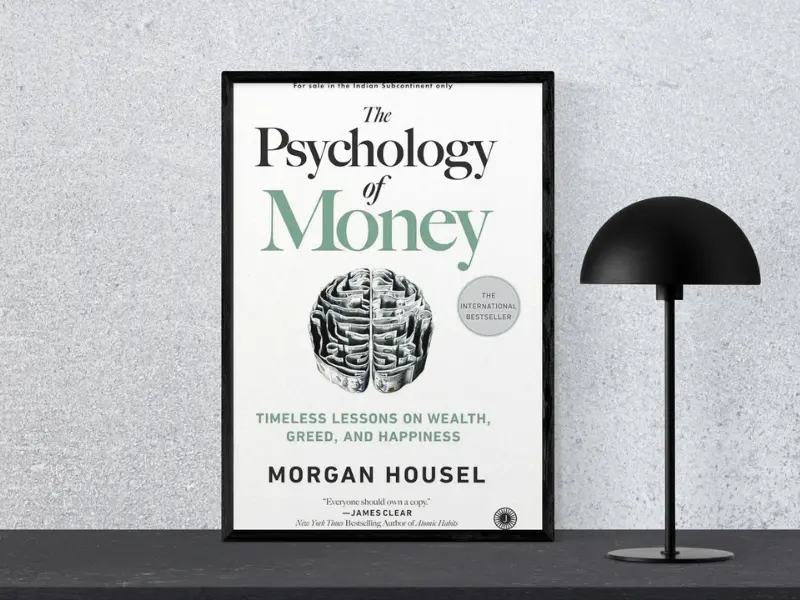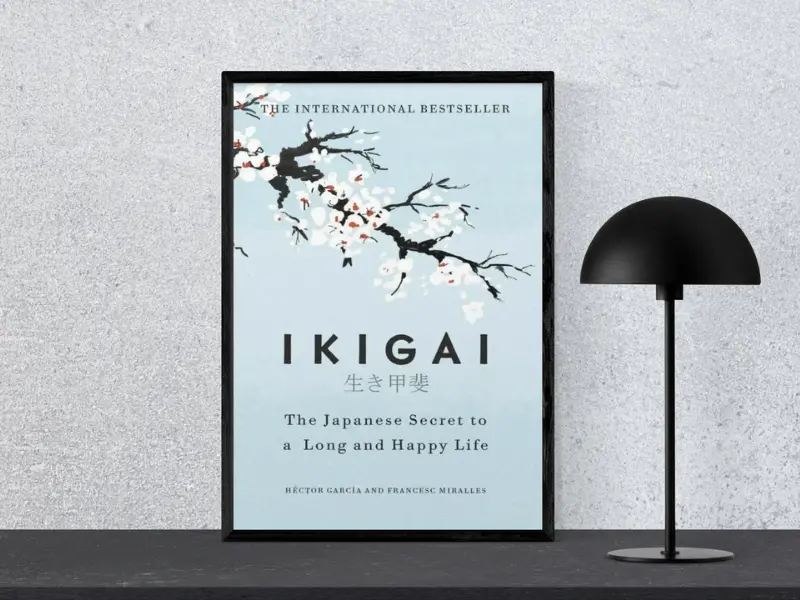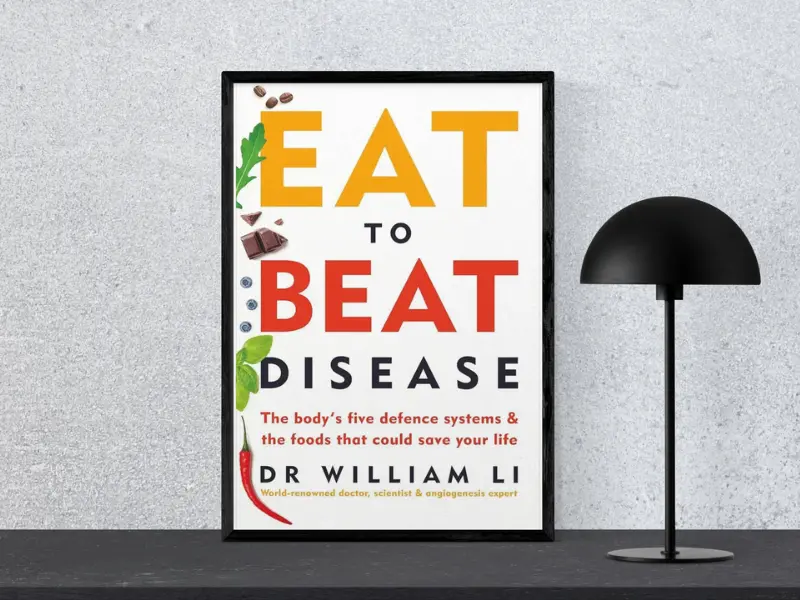
Eat to Beat Disease is a science-based health guide by Dr William Li. He explains how we can activate the body’s natural healing power through everyday food without following a strict diet. This book shows that our body has five strong defense systems: angiogenesis, regeneration, microbiome, DNA protection and immune system. These systems help fight cancer, diabetes, aging and infections naturally.
By including foods like broccoli, berries, fermented items, dark chocolate and tomatoes in a smart way, we can turn our meals into tools that fight disease. This method is not about restriction. It gives you the power to enjoy your favorite foods while improving your health.
In the next sections, we will understand each system step by step and see how simple food choices can turn your body into a healing machine.
PART I: HARDWIRED FOR HEALTH — Our Body’s Natural Defense Systems
The Hardwired for Health section builds a strong base. It explains that our body is naturally ready to fight diseases. Dr William Li says that all of us have five defense systems that can start healing on their own, without any outside medicine.
These systems are angiogenesis, regeneration, microbiome, DNA protection and immune response. They work together like a network, and we can turn them on or off through the food we eat.
This part of the book helps us understand that health is not something outside. It is already built into our body. In the next part, we will learn what each system does and how certain foods support them—so you can turn your meals into a healing toolkit.
Chapter 1: Angiogenesis
Angiogenesis means the formation of new blood vessels. This process quietly happens in our body all the time—when our skin gets a cut, when muscles repair, or when organs grow. Blood vessels carry nutrients and oxygen, and angiogenesis makes sure every tissue gets what it needs.
Role of Angiogenesis in the Body
It works like a maintenance system. It builds new vessels where needed and removes extra ones where not needed. Keeping this balance is very important:
- If angiogenesis is too low, healing becomes slow and organs become weak
- If it is too high, cancer cells may get extra blood supply and grow faster
Why Angiogenesis Matters
What we eat directly affects angiogenesis. Some foods support it when needed, and some block it when it becomes too active. If we understand how angiogenesis works, we can use our meals to fight cancer, heart disease and inflammation naturally.
Benefits when balanced
- Wounds heal faster
- Organs get proper oxygen
- Tissue repair becomes stronger
Problems when unbalanced
- Cancer cells get fuel
- Tumors grow
- Chronic inflammation increases
How to Keep It Balanced
Dr William Li says some foods help regulate angiogenesis smartly:
- Blockers: Green tea, berries, tomatoes, turmeric — these can stop blood supply to cancer cells
- Promoters: Citrus fruits, dark chocolate, omega-3 rich foods — these help with healing and repair
Dr Li also explains that angiogenesis is not just linked to cancer. It plays a key role in heart disease, obesity and vision loss (like macular degeneration). So if we keep angiogenesis in balance, we can protect ourselves from many chronic diseases at once.
Chapter 2: Regeneration
Regeneration means the natural repair or rebuilding of damaged tissues, cells or organs in the body. Dr William Li says regeneration is a biological superpower that every person has. Our body uses this power every day without us even knowing. This process keeps us alive because our cells are always breaking down and new ones are being made. Without regeneration, the body would slowly break down and the chances of chronic diseases, aging and organ failure would increase.
Stem Cells and Regeneration
Stem cells are the heroes of regeneration. These are special cells that can turn into any type of new cell—like liver cells, skin cells, brain cells and more. They are mostly found in bone marrow, fat tissue and some organs like the liver and intestine. Their job is to fix damaged parts, create new cells and slow down aging. If stem cells do not work properly, healing becomes slow and diseases like Alzheimer’s, heart failure, diabetes and arthritis can start to develop.
How Organs Heal Naturally
Stem cells are important for almost every organ—
- Brain: helps with neurogenesis
- Heart: supports tissue repair
- Liver: helps with detox
- Skin: supports renewal
- Pancreas: helps with insulin production
To keep stem cells healthy, we should eat foods rich in antioxidants and anti-inflammatory properties like berries, fatty fish, turmeric, green tea and dark chocolate. Also, lifestyle habits like good sleep, regular exercise, managing stress and occasional fasting can naturally boost stem cell activity.
Regeneration is a silent healer. If we support it, our body can repair itself on its own.
Chapter 3 : Microbiome
The microbiome is made up of trillions of bacteria, viruses, fungi and other tiny organisms that live inside our body and on its surface—mostly in the gut. These microbes do much more than just help with digestion. They play a key role in supporting our immune system, balancing our mood, managing metabolism and even protecting us from diseases like cancer.
Dr William Li says the microbiome is a defense system—like an army that protects our body. If it stays in balance, we stay healthy. If it gets disturbed (called dysbiosis), the risk of disease increases.
Role of Microbiome in the Body
- Digestion and Nutrient Absorption
- Gut bacteria break down fiber and make short-chain fatty acids that strengthen the gut lining
- Immune System Support
- Microbiome trains immune cells to know which germs to fight and which to ignore
- Inflammation Control
- A healthy microbiome keeps inflammation in check. Dysbiosis can lead to chronic inflammation
- Mental Health and Mood
- Through the gut-brain axis, microbiome affects mood hormones like serotonin
- Cancer Protection
- Some gut bacteria produce anti-cancer compounds. A poor microbiome may raise cancer risk
How Food Supports the Microbiome
Li explains that some foods feed and grow good bacteria. These are called prebiotic and probiotic foods.
- Prebiotic Foods (food for bacteria)
- Garlic, onion, banana, asparagus, whole grains
- These are rich in fiber and feed good bacteria
- Probiotic Foods (live bacteria)
- Yogurt, kefir, pickles, kimchi, sauerkraut
- These give good bacteria directly to the gut
- Polyphenol-Rich Foods
- Berries, green tea, dark chocolate, olive oil
- These help increase the variety of gut bacteria
What Harms the Microbiome
- Overuse of antibiotics — kills good bacteria
- Processed foods and sugar — grows bad bacteria
- Stress and poor sleep — disturbs the gut-brain connection
- Lack of fiber — bacteria don’t get enough food
Lifestyle Habits That Affect Microbiome
- Sleep: Poor sleep disturbs the microbiome
- Stress: Long-term stress weakens gut bacteria
- Exercise: Regular movement increases bacteria variety
- Fasting: Occasional fasting helps reset the gut
A balanced microbiome is key to strong health. With the right foods and habits, we can protect this hidden system every day.
Chapter 4: DNA Protection
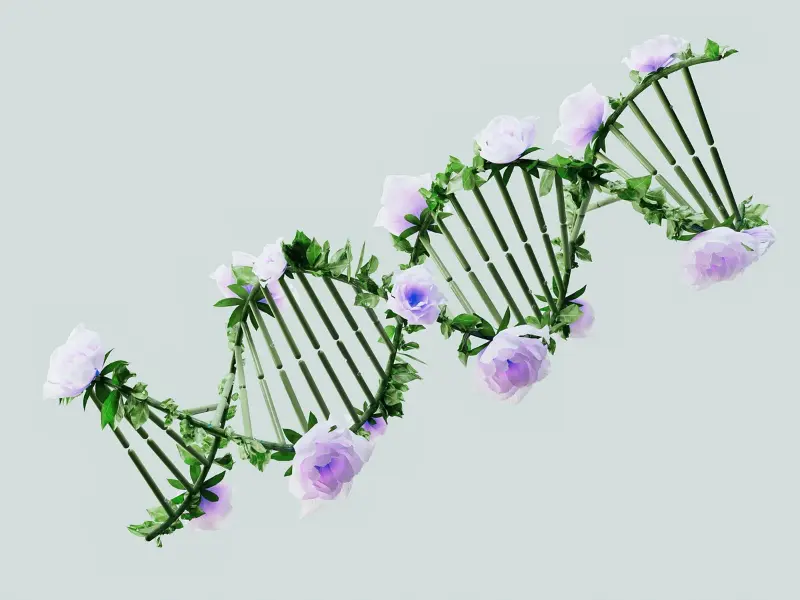
DNA is the genetic blueprint of our body. It is a chemical code found inside every cell. This code tells the cell what its job is, which protein to make, and when to divide or die. DNA has four letters: A, T, C, G. Their sequence works like an instruction manual that controls how the cell behaves.
How DNA Is Made
DNA is made inside the cell’s nucleus. When a cell divides, this code is copied. This copying process is usually accurate, but sometimes small mistakes happen. These mistakes are called mutations. DNA is tightly packed in the form of chromosomes. Every person has 23 pairs of chromosomes.
Role and Importance of DNA
Dr. William Li says DNA is the “instruction manual for life.” If this manual gets damaged, the cell may make the wrong protein or divide without control. This can lead to cancer, aging, or genetic problems. That is why protecting DNA is very important for survival.
How DNA Gets Damaged
DNA gets damaged every day. Pollution, UV rays, toxins, and even normal body processes can harm it. Free radicals are formed in the body due to oxidative stress. These can break the structure of DNA. Smoking, alcohol, processed food, and long-term inflammation are also major causes of DNA damage.
Body’s Natural Repair System
Our body has a DNA repair system. It uses enzymes to find and fix the damage. These enzymes join broken strands, correct mutations, and protect telomeres. But this system works well only when we follow a healthy diet and lifestyle.
What Happens When DNA Is Damaged
If DNA is damaged and not repaired:
- The cell makes the wrong protein
- Cancer cells may form
- Aging speeds up (wrinkles, tiredness)
- Risk of genetic diseases increases
- The immune system becomes weak
How to Keep DNA Balanced
To keep DNA healthy:
- Free radicals must be neutralized
- Inflammation should be reduced
- Telomeres need protection
- Repair enzymes should be supported
We can do this through food and lifestyle choices.
Foods That Protect DNA
Dr. Li recommends:
- Berries: Antioxidants help fight free radicals
- Green tea: Catechins reduce DNA damage
- Broccoli and cabbage: Sulforaphane activates repair enzymes
- Turmeric: Curcumin lowers inflammation
- Fatty fish: Omega-3s protect DNA
- Dark chocolate: Flavonoids help maintain DNA strength
Lifestyle Factors That Affect DNA
- Sleep: Deep sleep activates DNA repair enzymes
- Stress: Long-term stress increases DNA damage
- Exercise: Regular movement helps protect DNA
- Fasting: Occasional fasting supports DNA repair
- Pollution: Clean air and toxin-free surroundings are better for DNA
Chapter 5: Immunity
The author says the immune system is our body’s “surveillance and defense system.” It detects viruses, bacteria, cancer cells, and toxins, and destroys them. But if this system becomes overactive (autoimmune disease) or underactive (weak immunity), it can cause health problems.
1. Innate vs Adaptive Immunity
- Innate immunity: This is present from birth. It responds quickly. Skin, mucus, and stomach acid are part of this first line of defense.
- Adaptive immunity: This develops over time. It creates antibodies against specific germs. It also has memory cells that remember past infections.
2. Immune System Cells
- White blood cells: These include T-cells, B-cells, macrophages, and NK cells. They work together to fight infections.
- Cytokines: These are chemical messengers that activate immune cells. But if there is a cytokine storm (like in COVID), the body can harm itself.
Food and Immunity:
Dr. Li explains that some foods naturally support the immune system. They reduce inflammation, balance gut bacteria, and activate immune cells.
Top Immunity-Boosting Foods
- Mushrooms (shiitake, maitake, reishi): Contain beta-glucans that activate NK cells
- Green tea: Has EGCG compound that supports T-cells
- Broccoli and cruciferous vegetables: Contain sulforaphane that reduces inflammation and activates detox enzymes
- Pomegranate: Feeds gut bacteria, which helps the immune system
- Dark chocolate (high cocoa): Flavonoids help regulate immune cells
- Fatty fish (salmon, sardines): Omega-3s help control inflammation
- Fermented foods (yogurt, kimchi, kefir): Probiotics boost gut immunity
Gut-Immune Connection
Dr. Li strongly emphasizes that the gut and immune system are deeply connected. A healthy gut means a strong immune system.
- 70% of immune cells are in the gut lining
- Fiber-rich foods (whole grains, legumes) feed good bacteria
- Processed foods and sugar harm the gut
Factors That Harm the Immune System
- Chronic stress
- Poor sleep
- Smoking
- Too much alcohol
- Ultra-processed foods
- Lack of physical activity
These can weaken or confuse the immune system.
Lifestyle Tips for Strong Immunity
- Regular exercise: Helps immune cells move around the body
- Mindfulness and meditation: Reduces stress hormones
- Sleep: 7 to 8 hours are needed for immune recovery
- Sunlight: Provides vitamin D, which is important for immune cells
PART II: Eat to Beat Disease – The Evidence for Food as Medicine
“Let food be thy medicine and medicine be thy food.” — Hippocrates
This section explains that the food we eat directly affects the five health defense systems in our body. It can either make them stronger or weaker. Research from around the world, especially human trials and population studies, shows that food can act as a powerful form of medicine. This knowledge is no longer limited to doctors. Every person can improve their health by making better food choices—without needing a prescription.
Chapter 6: Starve Your Disease, Feed Your Health
A case study from a Japanese coastal village showed that people there had very low rates of cancer and heart disease. In 1993, scientist Theodore Fotsis tested their urine and found a powerful compound called genistein. This compound stops cancer cells from forming new blood vessels. The surprising part was that genistein came from their soy-rich diet. The body does not make it on its own. Compared to people on a Western diet, these villagers had 30 times more genistein.
This led to an important health insight: through food, we can control angiogenesis—the process of forming new blood vessels. If angiogenesis is too high, it can feed cancer cells and heart plaques. If it is too low, healing becomes slow. That’s why the idea of an angiopreventive diet was introduced. It uses food to gently control abnormal blood vessel growth.
In 2002, scientist Adriana Albini named this concept angioprevention. It is similar to the idea of “balance” in Ayurveda and Chinese medicine, where everything should stay in a “Goldilocks zone”—not too much, not too little.
Medicines like Avastin block cancer signals almost completely. This works for treatment but may be risky for prevention. On the other hand, food compounds like genistein are gentle. They bring extra blood vessel growth back to normal levels without side effects.
Angiogenesis is not just linked to cancer. It also plays a role in heart disease, arthritis, Alzheimer’s, and even blindness. In clogged arteries, plaques form new blood vessels that make them more unstable. Every type of cancer needs angiogenesis to grow. Without blood supply, cancer cannot survive.
If you have a family history of cancer, you can get a saliva or blood test to check for gene mutations. But even without genetic risk, you can take control by balancing angiogenesis through your diet and lifestyle.
Foods That Help Balance Angiogenesis (Angiopreventive Diet)
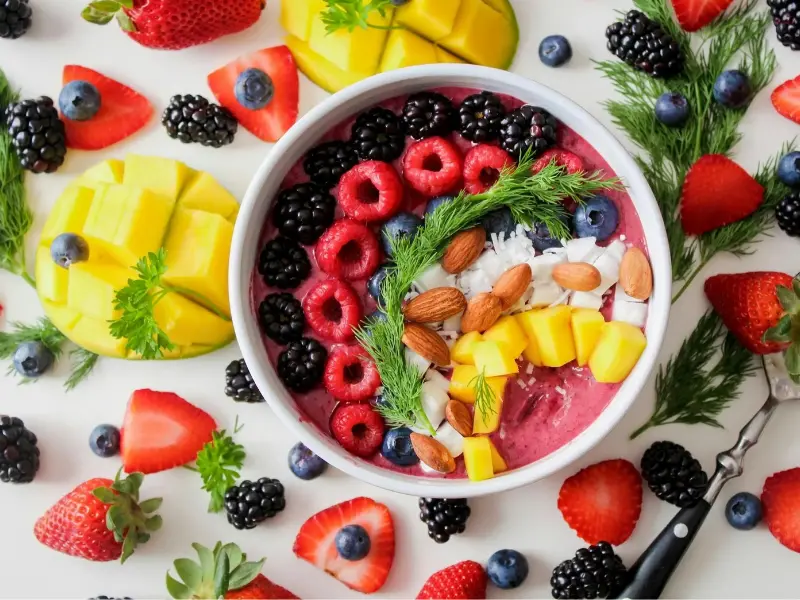
- Soyfoods: edamame, tofu, soy milk, miso, soy sauce
- Green Tea: matcha, sencha
- Berries: blueberries, strawberries, raspberries
- Cruciferous Vegetables: broccoli, cauliflower, kale
- Spices: turmeric, cinnamon, garlic
- Seafood: salmon, sardines (rich in omega-3)
- Dark Chocolate: with 70% or more cocoa content
Chapter 7: (Re)generate Your Health
A groundbreaking study was done at the University of California, San Francisco. Researchers divided 16 patients with coronary artery disease into two groups. One group received low-flavanol cocoa (only 9 mg per serving), and the other got high-flavanol cocoa (375 mg per serving made from CocoaPro powder). Both groups drank hot cocoa twice a day for 30 days.
At the end of the study, blood tests showed that the high-flavanol group had twice as many stem cells. Their blood vessel health also improved a lot. This was measured using a test called flow-mediated dilation, which checks how quickly blood vessels open up after being squeezed. The results were twice as good as before, showing that cocoa helped regenerate their blood vessels.
The most surprising part was that this stem cell boost was equal to the effect of statin drugs, which are usually given to lower cholesterol. This case study proves that even a simple food like chocolate can activate the body’s natural repair system.
“Stem cells are your body’s natural repair system—and the right foods can wake them up.”
Dr. Li
To activate stem cells and support regeneration, include these foods in your diet:
- High-flavanol cocoa (dark chocolate)
- Omega-3 rich fish: tuna, hake, yellowtail
- Shellfish: Manila clams, cockles
- Sea cucumber
- Squid ink
These foods help slow down aging and support deep healing from within.
Chapter 8: Feed Your Inner Ecosystem
You are eating for 39 trillion.
When a pregnant woman says, “I’m eating for two,” she chooses healthy food for her baby. But every person should understand that we are not just eating for ourselves—we are also feeding the 39 trillion bacteria living in our gut. These bacteria affect our digestion, immunity, mood, and even our body’s ability to heal.
Akkermansia muciniphila
Akkermansia muciniphila is a powerful gut bacteria. It makes up only 1–3% of the microbiome, but it plays a key role in:
- Regulating the immune system
- Controlling blood sugar
- Reducing gut inflammation
- Fighting obesity
It also helps improve the success of cancer immunotherapy. To naturally increase this bacteria, include pomegranate juice and cranberries in your diet. These foods create a gut environment that supports Akkermansia growth through bioactive compounds like ellagitannins.
When we eat fiber-rich and minimally processed foods, they reach the far end of the gut and nourish the microbiome. This helps strengthen overall health and immunity.
Chapter 9: Direct Your Genetic Fate
Researchers selected six people and took their blood samples. Then they gave them 1.75 cups of pasteurized orange juice. After two hours, they took another blood sample. The same test was repeated with a placebo drink made of water, sugar, and a vitamin C tablet.
Using the Comet Assay Test, they found that drinking orange juice reduced DNA damage by 19% compared to the vitamin C tablet. This means orange juice contains more than just vitamin C—it also has powerful antioxidants like naringenin and hesperidin that help protect DNA.
Some foods like berries, kiwi, broccoli, soy, oysters, and seafood protect DNA from free radical damage and also help boost its repair. These foods contain antioxidants and bioactive compounds that can turn genes on or off, helping protect the body from cancer.
Chapter 10: Activate Your Immune Command Center
It explains how we can strengthen our immune system through food, fasting, and lifestyle choices. It shows that certain foods like chicken soup, mushrooms, soy, and cruciferous vegetables (like broccoli and cabbage) help boost immunity, reduce inflammation, and activate disease-fighting cells.
It also covers diseases linked to weak or overactive immunity, such as:
- Cancer
- Diabetes
- Lupus
- Asthma
- Celiac disease
The chapter highlights how smart food choices can naturally support and balance our immune defenses, helping the body fight illness more effectively.
PART III: Plan, Choose, and Act – Putting Food to Work
This is not just about understanding health concepts—it’s about taking real, practical steps. The food you choose every day either builds your health or breaks it.
You’ll learn a simple 5×5×5 framework that easily fits into your daily routine without strict dieting or restrictions. This approach is based on your favorite foods and guides you step-by-step on how to rethink your kitchen, your choices, and your recipes to naturally support your health.
Chapter 11: The 5×5×5 Framework – Eating to Beat Disease:
This framework is simple, flexible, and designed for lasting health.
- Five Health Defense Systems
Every day, you need to support five systems in your body—angiogenesis, regeneration, microbiome, DNA protection, and immunity. - Five Health Boosting Foods Daily
Choose five foods from your favorites that support these systems. These foods are backed by science and match your taste. - Five Eating Occasions
Include these five foods in your daily routine across five meals or snacks—breakfast, lunch, snack, dinner, and dessert. It is flexible, whether you eat all in one meal or spread them out. - Personalized and Flexible
The plan adjusts to your likes, allergies, budget, and lifestyle. There are no strict rules—eat what you enjoy as long as it benefits your health. - Sustainable and Adaptable
You can follow this approach anywhere and in any situation—at work, while traveling, in restaurants, or at social events. Even if organic food is not available, go with the best option you can find. - Long Term Impact
- Five foods times seven days equals thirty five healthy choices per week
- Thirty five times fifty two weeks equals one thousand eight hundred twenty healthy choices per year
- Even if you make one hundred unhealthy choices, ninety five percent of your food will still be healthy
Let the good outweigh the bad
Chapter 12: Rethinking the Kitchen
This chapter explains how making your kitchen health-friendly can help you easily follow the 5×5×5 framework. It includes a list of basic tools like knives, pans, steamers, and blenders, along with pantry essentials such as olive oil, vinegars, and dried goods that support healthy cooking.
It also advises removing outdated or harmful items like Teflon pans and plastic containers. A clean and well-equipped kitchen gives you full control over your meals and helps you use disease-fighting foods more effectively.
Chapter 13: Exceptional Foods
This chapter is about “Exceptional Foods”—unique ingredients that offer both great taste and proven health benefits. The author divides these foods into four categories:
- Global Finds – Ingredients discovered from different cultures around the world
- Jaw-Droppers – Foods with surprising and powerful health effects
- Grand Slammers – Nutrient-rich foods that support multiple health defense systems
- Market Standouts – Easily available foods with strong scientific backing
These foods can easily fit into your 5×5×5 framework and help make your meals both flavorful and disease-fighting.
The chapter focuses on substance over style—choosing foods based on solid research, not passing trends.
Chapter 14: Sample Meal Guide and Recipes
This chapter shows how to apply the 5×5×5 framework in your daily routine using sample meal plans and recipes. Each day, you just need to choose 5 health-boosting foods that support your body’s 5 defense systems—angiogenesis, regeneration, microbiome, DNA protection, and immunity.
You can include these foods in your meals or snacks throughout the day—whether your routine is smooth or unpredictable. The focus should always be on good foods that naturally replace unhealthy ones.
This flexible approach helps you stay consistent without strict rules. It’s about making smart choices that fit your lifestyle and support long-term health.
Chapter 15: Food Doses
- Food as Medicine
Just like medicines have specific doses, the bioactive compounds in foods also work best in certain amounts. These doses help in disease prevention and healing. - Scientific Validation
Researchers are now studying food doses using drug-like testing methods. They use molecular, genetic, and biochemical analysis to understand how food affects the body. - Dose Chart
The chapter includes a detailed chart showing how much of each food should be eaten and what health benefit it provides.
For example: Apples – 1 to 2 per day may help reduce the risk of bladder cancer. - Food vs Drugs Study
In a TED Talk, the author showed that some foods were even more powerful than certain cancer drugs—especially when it comes to controlling angiogenesis (the growth of blood vessels). - New Healthcare Vision
In the future, doctors and nutritionists will need to be trained in the concept of food doses. This will help patients create diet plans based on their personal health needs.
Criticism
According to critics, the strongest part of the book Eat to Beat Disease is its practical system for including healthy foods. However, some concerns have also been raised. They say the book relies heavily on epidemiological studies, which only show correlation and not actual cause and effect, even though the book sometimes seems to suggest otherwise. Dr. Li’s plan is quite open ended, which makes it feel like a general “eat more plants” suggestion and can be too much for beginners. Some reviewers also pointed out that Dr. Li seems biased against anti inflammatory diets, which does not match well with the idea of personalized nutrition.
Conclusion
The conclusion of Eat to Beat Disease is that Dr. Li believes food should not only be about taste, but also about healing. He explains that to strengthen the body’s five defense systems—immunity, DNA protection, stem cell regeneration, angiogenesis, and gut microbiome—it is important to choose specific foods. The book also teaches what to eat, how much to eat, and how to eat it—so that cancer cells do not grow, good bacteria survive, and the body heals naturally. This is a long term and sustainable approach where every bite works like medicine—and prevention becomes the best form of treatment.
